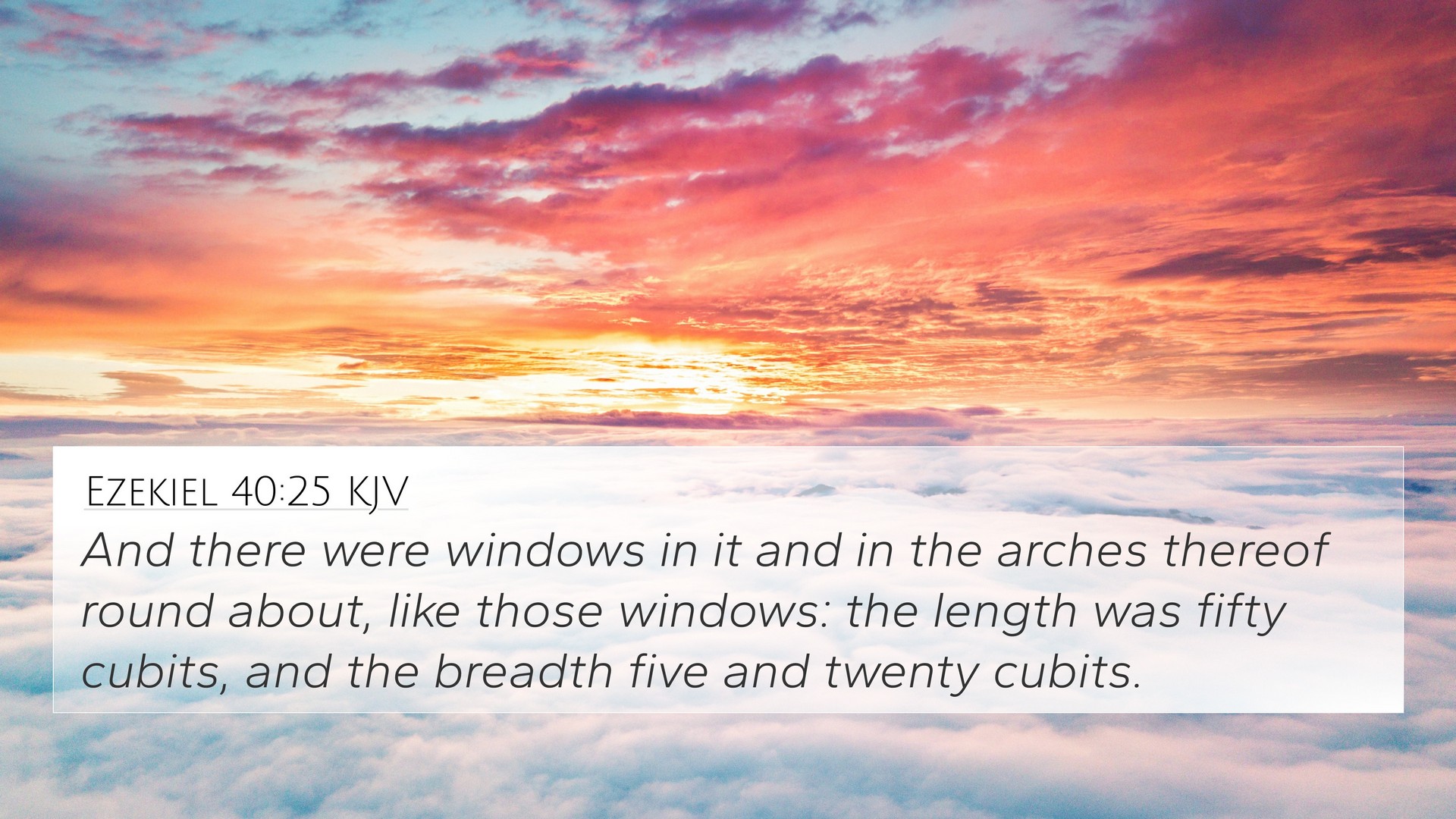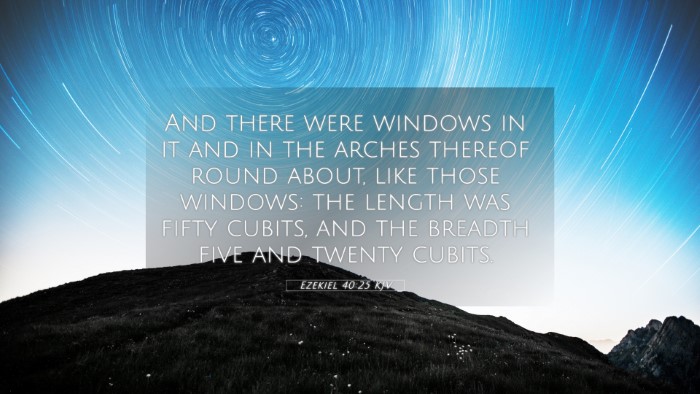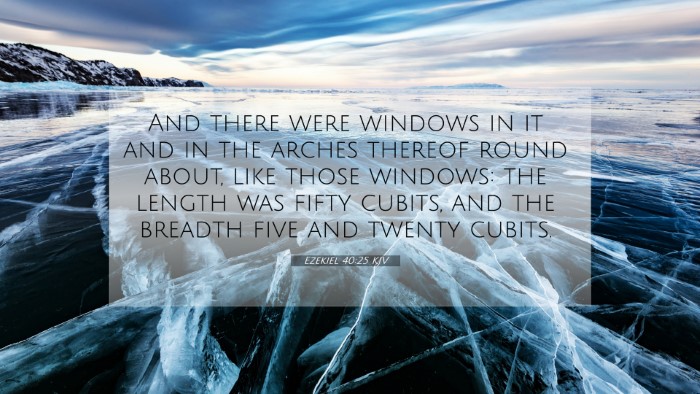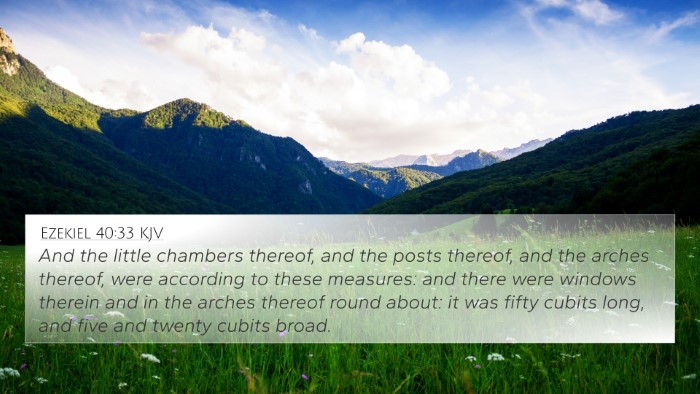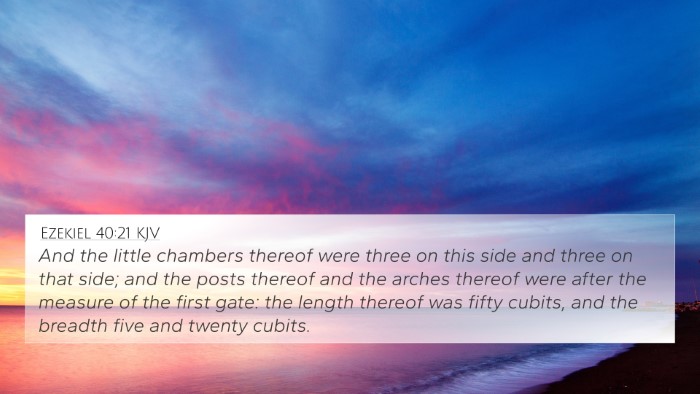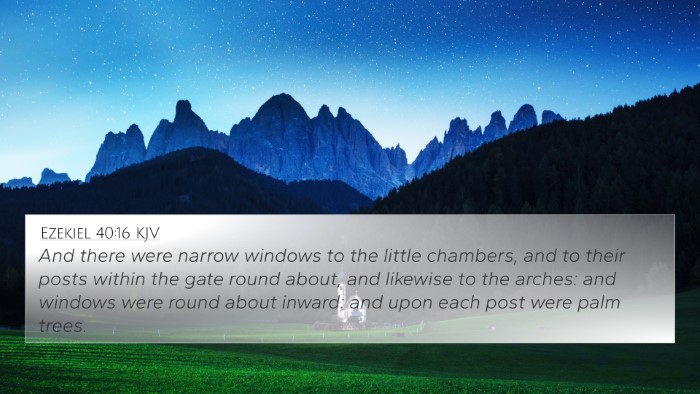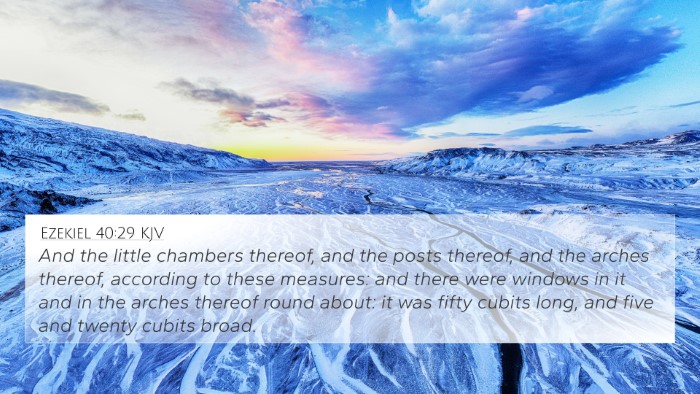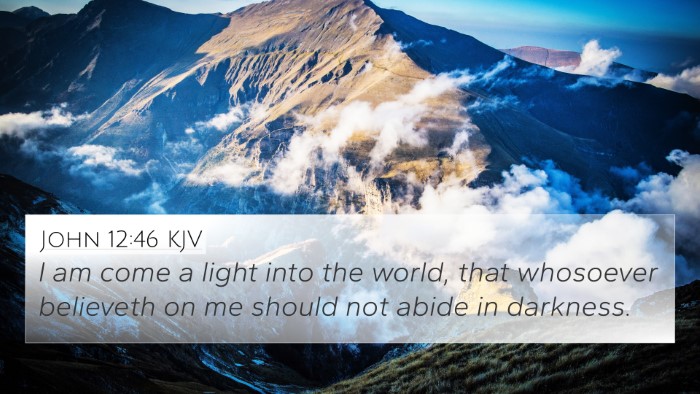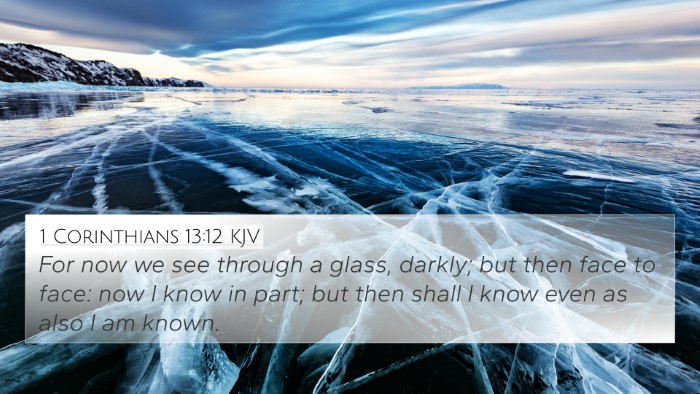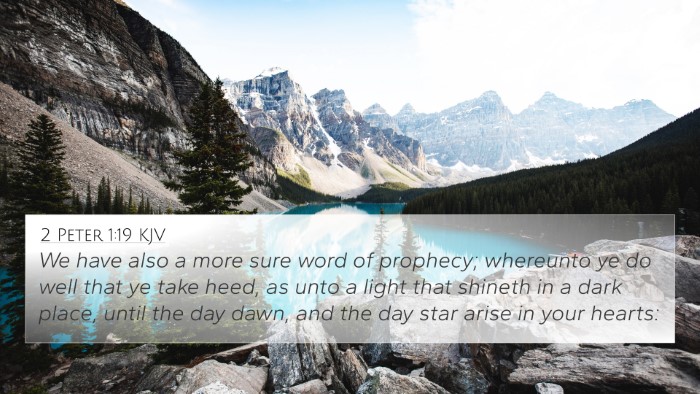Ezekiel 40:25 - Summary and Interpretation
Ezekiel 40:25 states, "And the windows of it were narrow above, and round about; like those windows: the length was fifty cubits, and the breadth five and twenty cubits." This verse describes the design of the temple as seen in Ezekiel's vision, emphasizing specific architectural details that reflect spiritual truths about God’s dwelling place and His relationship with Israel.
Understanding the Verse
The verse forms part of a larger prophetic vision that portrays the ideal temple and examines how God rejoices in the presence of His people. The narrow and round windows suggest illumination and perspective; they allow light to enter while also limiting the view from outside, which signifies a controlled revelation of God's glory.
Insights from Commentaries
-
Matthew Henry:
Henry emphasizes the importance of the temple layout, noting that it reveals God's order and holiness. He suggests that the dimensions symbolize God's complete provision and the need for purity and distinctness in worship.
-
Albert Barnes:
Barnes discusses the significance of the temple's architecture. He highlights that the specificity in measurements is indicative of divine precision and order in worship. The narrow windows reflect God's salvation, both as a light to the faithful and a distinction from the external darkness.
-
Adam Clarke:
Clarke elaborates on the architectural features, pointing out that the design was meant to facilitate spiritual practices. The proportion and aesthetics symbolize a sacred space designed for communion with God, illustrating how sacredness should permeate physical spaces.
Cross-References to Ezekiel 40:25
This verse resonates with several other texts across the Bible. Here are 8 important cross-references that deepen the understanding of Ezekiel 40:25:
- 1 Kings 6:4: Describes the windows of Solomon's temple, providing a parallel in design and function.
- Isaiah 60:19-20: "The sun shall no more be thy light by day, neither for brightness shall the moon give light unto thee..." speaks of God as the ultimate source of light.
- Psalms 27:4: "One thing have I desired of the LORD, that will I seek after; that I may dwell in the house of the LORD all the days of my life..." emphasizes the importance of God's dwelling place.
- Matthew 5:14: "Ye are the light of the world. A city that is set on a hill cannot be hid." This indicates the spiritual light believers are called to reflect.
- Hebrews 9:11: "But Christ being come an high priest of good things to come, by a greater and more perfect tabernacle..." connects the Old Testament temple with the ultimate sacrifice of Christ.
- Revelation 21:23: "And the city had no need of the sun, neither of the moon, to shine in it: for the glory of God did lighten it..." reflects the eternal light God provides His people.
- Ephesians 2:19-22: Speaks of the church as a spiritual house where God dwells, connecting the physical temple with the New Testament community of believers.
- John 14:2-3: "In my Father's house are many mansions..." reveals the promise of dwelling in God’s presence eternally.
Thematic Connections
Ezekiel 40:25 is not only a description of the temple but also gives insight into the nature of God's relationship with His people. The themes of light, holiness, and divine presence recur throughout the Scriptures, connecting this verse with broader theological concepts.
Connecting Biblical Texts
-
Architectural Symbolism:
The design of the temple, as seen in Ezekiel 40, corresponds to the reverence due to God and serves as a reminder of His majesty.
-
Divine Light:
The notion of God as light pervades both the Old and New Testaments, illustrating His guidance and protection over His people.
-
Purity in Worship:
The specific measurements and structures emphasize that worship should be conducted in a manner reflective of God's holiness and goodness.
Tools for Further Study
For those seeking a deeper understanding of Ezekiel 40:25 and its connections, various tools and resources can be utilized:
- Bible Concordance: Useful for finding related verses and themes.
- Bible Cross-Reference Guide: Helps in identifying interconnections among different scriptures.
- Cross-Reference Bible Study: Techniques to draw parallels and similarities between passages.
- Bible Chain References: A method to build a study based on linking verses together.
Conclusion
Ezekiel 40:25 holds rich theological implications that extend beyond the physical description of the temple. It invites believers to reflect on how God reveals Himself and how sacred spaces facilitate the worship and glory due to Him. Through cross-referencing and thematic analysis, we can gain a fuller understanding of the Bible's narrative and its interconnectedness.
